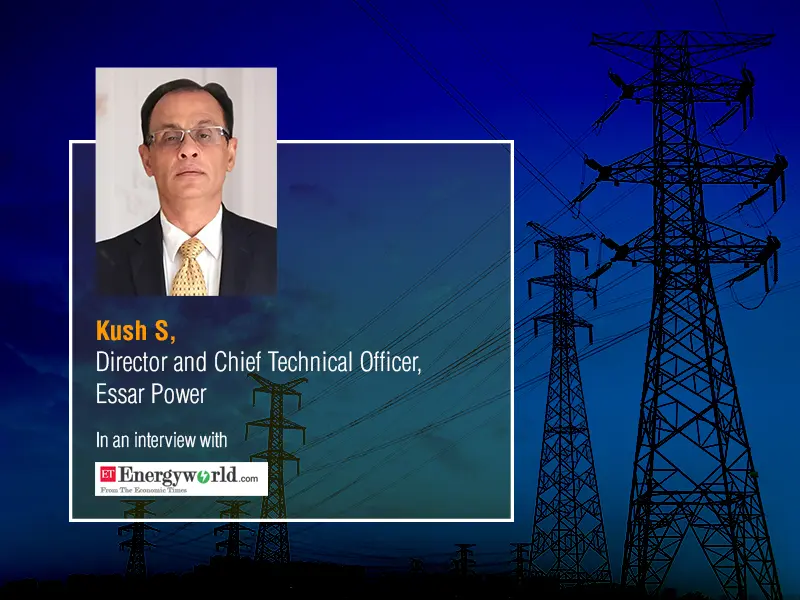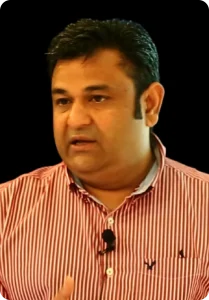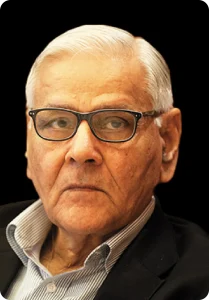The power sector is going through a challenging phase with many power plants getting stranded, Kush S, Director and Chief Technical Officer at Mumbai-based Essar Power, which operates generation capacity of 3,245 MW, tells ET Energy World in an exclusive interview. Edited excerpts..
Can you share a brief overview of Essar Power’s installed capacity, under-construction plants and future expansion plans?
The current operating capacity is around 3,245 megawatt (MW) which is a mix of coal, multi-fuel and combined cycle gas-based plants. Essar Power has been in existence for over 20 years. Essar Global Fund Limited (EGFL), the holding company of Essar Power, has invested about Rs 32,000 crore in the power portfolio. EGFL has also invested in the transmission business and has constructed a 465 km interstate transmission system, which spans three Indian states. Essar Power has completed its capex programme and is focussed on increasing the profitability of the operating assets. We are currently reviewing the regulatory landscape that is going through several changes, and will take a view on expansion at a later date.
The Coronavirus pandemic is creating significant economic impact. How is this crisis different from the 2008-09 economic crisis and what will be its impact on the power sector?
In 2008-09 crisis, Indian power sector was still served by central and state undertakings, while the private sector had started to commission their first units. Hence, the effect, if any, would have been restricted to the government entities comprising power generators, coal suppliers, distribution companies etc. Moreover, India at that time had a huge gap between demand and supply by virtue of which plants were in continuous operation, with no part of the value chain dependent on a volatile, unpredictable and subdued merchant power market.
This time, the power sector is already being affected. The distribution companies (discoms), as part of measures adopted by various state governments to mitigate the impact of COVID-19 pandemic, have deferred or in some cases waived their monthly bill collections from consumers. With no collections, their ability to pay for the power being consumed by users has diminished significantly. The consequence of this is that generators now have huge paucity of cash liquidity to fund fuel supply and operation and maintenance expenses.
What are the strategic measures being planned by your company to deal with the COVID-19 outbreak and its effects?
When the demand for power is low and prices get depressed in the market, the only option available is to see that costs are in control to ensure operational viability. We are also regularly evaluating how we can use technology to improve productivity and reduce costs. Additionally, health and safety will be the most important factors determining the allocation of resources in the aftermath period.
How do you assess the project activity witnessed in the power sector last financial year (2019-2020)? Do you expect reduction in investments in new projects, project expansion in this financial year (2020-2021)?
The power sector is going through a challenging phase, with a number of power plants which are either ready or in the last stages of readiness, being stranded. The primary reason is structural issues in the sector. As long as this capacity is sitting idle and the existing capacity operates at low plant load factor of around 50 to 60 per cent, it will be difficult to attract further investment in the sector. The factors that can help revive the sector are improvement in the financial health of discoms, availability of fuel at reasonable prices to generators, restructuring of debt of the impacted power plants, and ensuring medium and long-term power purchase agreements in the power sector.
Across the power sector, company executives have flagged concerns about the shortage of labourers working at the plant sites, as they all have gone back home due to lockdown. How big is this a concern for you?
We have not faced this issue to a large extent. Moreover, we have a high percentage of local workforce employed in our plants. We have therefore been able to manage, although there is a definite impact because our logistics volumes are high and that is affected by the lack of skilled drivers.
To what extent has the disruption in the supply chain impacted your company’s business? What has been the impact on your transmission sector business?
We have been able to maintain the supply chain of coal, consumables and spares required for the power plants in these times through concerted efforts with vendors. Our transmission business is already up and running by its nature, as the business doesn’t require heavy maintenance. We have dedicated teams that regularly assess infrastructure readiness and rectify issues.
What is your view on energy transition in emerging economies? Do you think India will continue its heavy reliance on coal and thermal power plants?
We are slowly but surely moving along with the rest of the world towards higher renewable energy capacity. However, given the challenges of variability and availability in shorter durations for renewable capacity, it will take time for renewable energy to be economically viable. Until then, coal will be our mainstay as fuel. India’s power consumption is going to increase significantly during the next decade. There will be a mix of portfolios to cater to the various needs of the country in terms of meeting both peak as well as base load requirements through cheap power in a resource-constrained environment.
Does the current crisis in the power sector pose risk of power plants becoming stranded assets, if no immediate steps are taken? Can they become potential NPAs?
Yes, that is highly probable for plants that are affected by payment delays from discoms, or are unable to sell power due to lack of power demand.
Source: ET Energy World















































